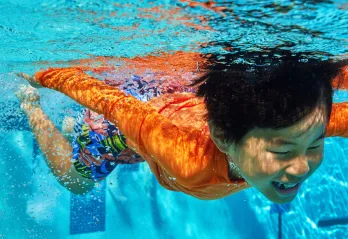Anyone Can Drown. No One Should: World Drowning Prevention Day

Drowning has claimed over 2.5 million lives in the last decade alone. Every year, drowning takes the lives of approximately 236,000 people globally, making it the third leading cause of unintentional injury death worldwide.
Children are particularly vulnerable—globally, the highest drowning rates occur among children aged 1–4 years, followed by children aged 5–9 years. For every child who dies from drowning, another five receive emergency department care for nonfatal submersion injuries.
Six Evidence-Based Solutions That Work
The World Health Organization has identified six evidence-based, low-cost drowning prevention interventions that countries and organizations can implement to drastically reduce the risk of drowning. These proven strategies include:
Installing barriers controlling access to water: Physical barriers such as pool fences, covers, and door locks can prevent unsupervised access to water sources. Four-sided pool fencing with self-closing, self-latching gates can reduce childhood drowning risk by up to 83%.
Providing safe places away from water for pre-school children, with capable childcare: Formal and informal childcare arrangements keep young children supervised and away from water hazards during high-risk periods.
Teaching swimming, water safety and safe rescue skills: Swimming instruction, when coupled with water safety education, can be a valuable component of drowning prevention.
Training bystanders in safe rescue and resuscitation: Immediate rescue and resuscitation can significantly improve survival outcomes. CPR training for pool operators, lifeguards, and community members creates a network of potential first responders.
Setting and enforcing safe boating procedures: Proper regulations regarding vessel safety, passenger limits, life jacket requirements, and weather restrictions can prevent many recreational and transportation-related drownings.
Improving flood risk management: Comprehensive flood management strategies, including early warning systems, flood-resistant infrastructure, and community preparedness, can reduce drowning deaths during natural disasters.
How the YMCA of Central Stark County Makes a Difference
At the YMCA of Central Stark County, water safety isn't just a program—it's a mission. Our commitment to drowning prevention extends throughout the year with comprehensive offerings designed to serve our community's diverse needs.
Learn to Swim Programs
Our progressive swim instruction welcomes participants of all ages and abilities. From parent-child classes for our youngest members to adult beginner lessons, we believe it's never too early or too late to learn this life-saving skill. Our certified instructors use proven techniques that build confidence alongside competence in the water.
Water Safety Education
Beyond swimming strokes, we teach critical water safety skills, including how to recognize dangerous water conditions, the importance of adult supervision, and basic rescue techniques. Our programs emphasize that water safety is everyone's responsibility.
Lifeguard Training and Certification
We prepare the next generation of aquatic safety professionals through comprehensive lifeguard training programs. These courses combine water rescue skills, CPR/AED certification, and emergency response protocols to create well-rounded safety professionals.
Accessible Programming
We believe financial barriers should never prevent someone from learning life-saving water safety skills. Our scholarship programs and sliding fee scales ensure that all families in Central Stark County can access our aquatic programs regardless of their economic circumstances.
Taking Action in Your Community
World Drowning Prevention Day serves as a powerful reminder that drowning prevention requires collective action. Here's how you can make a difference:
In Your Home:
- Install proper barriers around pools and spas
- Ensure constant, attentive supervision around water
- Learn CPR and basic water rescue techniques
- Teach children to swim and understand water safety
- Remove water from containers immediately after use
Remember, drowning prevention isn't just about learning to swim—it's about creating a culture of water safety that protects our entire community, year-round.